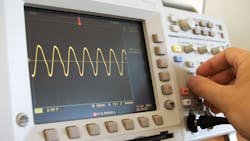This article appeared in Electronic Design and has been published here with permission.
What you’ll learn:
- What's meant by the terms "RMS watts" and "peak watts?"
- What's the difference between RMS power and peak power?
- Why these distinctions are important in the context of audio systems.
In the consumer electronics world, you will often hear about watts, power handling, and power output. The terms are used interchangeably to refer to two values, that is, root mean square (RMS) and peak power rating. Power rating is among the essential factors that contribute to an ideal sound system. It is, therefore, important to know what these two values refer to whether you’re searching for speakers, amplifiers, or subwoofers.
When looking to build a high-performance entertainment system, most people tend to shop for audio and sound equipment based on the one that has the highest power rating. However, this may prove difficult for starters who don't understand the difference between RMS and peak watts. Also, some may choose to ignore the ratings and go for brands, but this will affect the final outcome in one way or another.
Learn more about amplifiers and RF power
So, if you’re going to spend your hard cash on a surround-sound speaker, subwoofer, or even an amplifier, you'll need to have basic information on power ratings. This comprehensive guide will help you understand these two values to assist in you assembling a decent sound system.
What does the term "RMS watts" mean?
Root mean square or simply RMS watts refers to continuous power handling of a speaker or a subwoofer or how much continuous power an amplifier can output. RMS values are usually lower than peak watts ratings, but they represent what a unit is truly capable of handling. Think of RMS power as the average power that a speaker can handle on a daily basis without compromising sound quality or experiencing any distortion.
Peak Watts: A Speaker's Short-Term Maximum
The peak power handling is the highest power level that a speaker or a subwoofer can handle in a short burst without blowing. The same holds for amplifiers as the absolute highest amount of power they can put out before failing or without resulting in distortion.
We can think of peak watts as the number atop of your car's speedometer. For example, you can drive for maybe 180km/h, but you can't sustain that speed for long without causing mechanical or thermal damage to the car. In the same way, the peak power level can only be maintained for a fraction of a second, although there’s no clear definition of how long.
If the unit is subjected to constant peak power, the wires may overheat, which could quickly damage the voice coils.
Differentiating Between RMS Power and Peak Power
When shopping around, you'll notice that some manufacturers rate their products' power-handling capabilities using either the peak watts rating or RMS rating, while most use both values. For example, a unit can be rated at 150 W while another brand may be advertised at 75 W.
At first glance, one might be tempted to think that the former is better because it’s rated at a higher power level than the latter. However, upon a closer look, you may notice that the first product is rated for peak watts while the second one is advertising RMS watts. Typically, a unit’s peak power handling is double the RMS power handling, which basically means that the above products are actually rated the same: 150 W peak/75 W RMS.
Most audio equipment manufacturers, though, prefer to stress more on the peak power rating to make the products look like they deliver more power than they’re capable of. While this may sound convincing, utilizing peak power not only disturbs your neighbors, but also makes your sound equipment depreciate in value, requiring you to replace some parts or buy a new unit altogether. As such, if you want to your speaker to last for years, the figure to look out for is the RMS wattage, the power input at which you should be enjoying your music.
However, when it comes to these technical details, don't get confused by speaker power ratings and amplifier specifications. Amplifiers generate power in an audio system, which is not the case with speakers and subwoofers. Therefore, speaker power ratings refer to the amount of power your speakers can handle from an amplifier. The specifications on the amp, on the other hand, refer to how much power it can produce for maximum audio performance.
Why All This Matters in Audio Systems
Both RMS and peak watts play an important role in your sound system, and they’re vital when comparing your speakers with amplifiers or subwoofers. When matching speakers or subwoofers to amplifiers, you should compare either two RMS values or two peak ratings.
Therefore, one should not get confused when comparing peak and RMS ratings. This will ensure that you'll get the best out of each component. If the power outputs aren’t correctly matched, the components can overheat and create a couple of other issues. However, it’s important to stress that you should always use RMS ratings—not peak wattage—when matching and comparing gear.
David M. Foster is Head of Content at SpeakerChampion.
About the Author
David M. Foster
Head of Content, SpeakerChampion
David M. Foster is a passionate sound engineer with over 13 years’ experience in the sound industry. He is well-versed with all sound design and engineering aspects, and thus fits the crucial position of Head of Content at SpeakerChampion. He has a degree in Sound Engineering from American River College.
Under the leadership of David M Foster, our experienced team of top-performing content developers provide extensive sound engineering skills and knowledge. David’s expertise ensures that all content is technically correct. His experience has also been instrumental in keeping SpeakerChampion at the forefront of noticing new developments in the sound industry.




